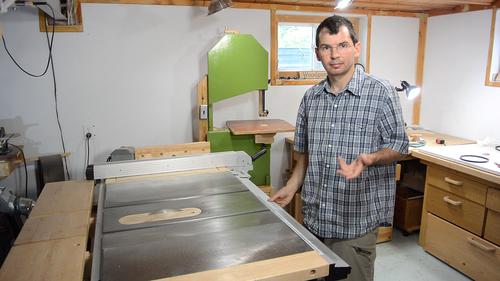
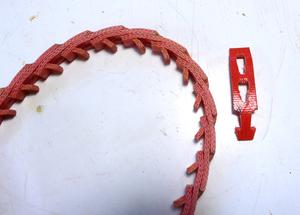 Shortly after I bought my delta hybrid table saw,
I bought one of those fancy expensive link belts (power twist) for my
table saw. The belt noticeably cut down on the vibration.
Shortly after I bought my delta hybrid table saw,
I bought one of those fancy expensive link belts (power twist) for my
table saw. The belt noticeably cut down on the vibration.

 Shortly after I bought my delta hybrid table saw,
I bought one of those fancy expensive link belts (power twist) for my
table saw. The belt noticeably cut down on the vibration.
Shortly after I bought my delta hybrid table saw,
I bought one of those fancy expensive link belts (power twist) for my
table saw. The belt noticeably cut down on the vibration.
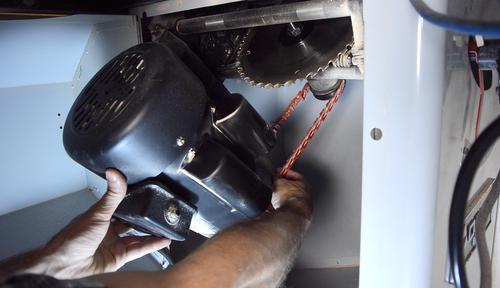 But my table saw is a cheap table saw, and every once in a while, it
develops a slight rumble. Sometimes this rumble is caused by the screws
coming loose on either the motor pulley or the saw's pulley. The
easiest way to get at these is to lower the blade all the way and tilt
the saw 45 degrees.
But my table saw is a cheap table saw, and every once in a while, it
develops a slight rumble. Sometimes this rumble is caused by the screws
coming loose on either the motor pulley or the saw's pulley. The
easiest way to get at these is to lower the blade all the way and tilt
the saw 45 degrees.
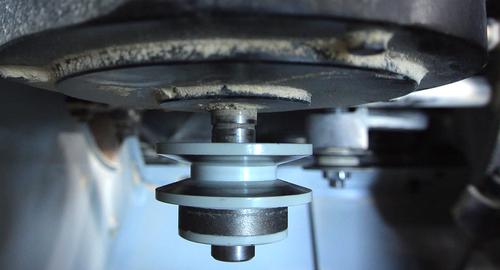 On closer look, it wasn't the pulleys this time.
On closer look, it wasn't the pulleys this time.
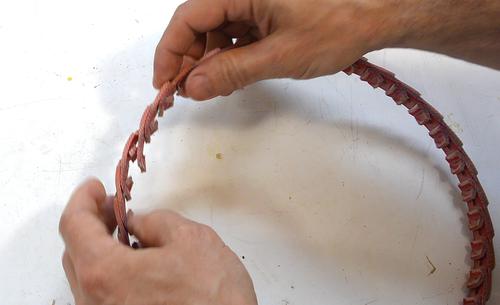 Looking at the belt, one of the links had broken.
Looking at the belt, one of the links had broken.
This was probably the third time this had happened since I installed the belt. I was able to take out the defective link, and the belt was still long enough. Putting it back in the saw, it ran like it always did.
But with links failing from time to time, I figured, this belt might be about worn out by now. I replaced it with an inexpensive belt from Canadian Tire. This belt was slightly thinner and softer than the one the saw came with, so the vibrations were ok.
For a contractor and hybrid table saws, where the motor's weight hangs in the belt, this can cause the motor to bobble up and down a bit. And with every force having an equal and opposite reaction, this causes the saw itself to shake as well.
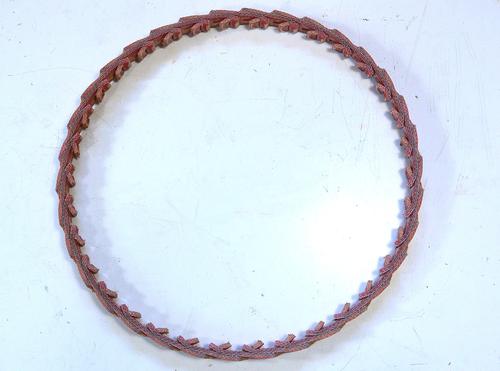 Link belts, not made of rubber, are not prone to assuming
the shape of the pulleys, so this source of vibration is eliminated.
Link belts, not made of rubber, are not prone to assuming
the shape of the pulleys, so this source of vibration is eliminated.
However, the individual links going over the pulleys, at least on my saw, cause quite a whine, making the saw a fair bit louder.
The thinner belt from Canadian Tire caused less vibration than the belt my saw came with, though more than with the (repaired) link belt. But the saw is much quieter with the V-belt. Ironically, going back to a regular cheap V-belt now feels like an upgrade!
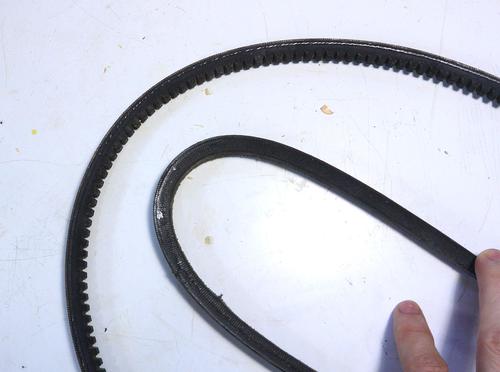 Perhaps a better solution would just be a softer rubber belt, like the toothed
one shown here. This belt will probably wear out a bit faster, but it's more
efficient and quieter, and also reduces the vibration. I think that would be
a better solution (and the link belt doesn't last that long either).
Perhaps a better solution would just be a softer rubber belt, like the toothed
one shown here. This belt will probably wear out a bit faster, but it's more
efficient and quieter, and also reduces the vibration. I think that would be
a better solution (and the link belt doesn't last that long either).
The link belt, being a fairly hard material, is also hard on the pulleys, so I highly recommend against using one for a homemade machine with wooden pulleys.
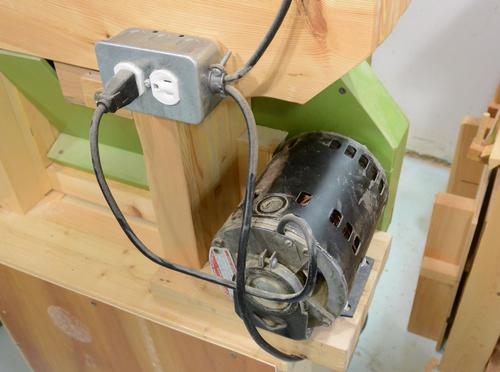 A better solution to the vibration problem is to have the motor rigidly mounted
to the frame. On my homemade bandsaw,
the motor is bolted directly to the frame, and I wedged another block of wood
between the motor housing and the frame. That way, even if the belt
causes vibration, it won't cause the motor to move. The belt itself is fairly light
so vibration in the belt itself is not enough to shake the machine.
A better solution to the vibration problem is to have the motor rigidly mounted
to the frame. On my homemade bandsaw,
the motor is bolted directly to the frame, and I wedged another block of wood
between the motor housing and the frame. That way, even if the belt
causes vibration, it won't cause the motor to move. The belt itself is fairly light
so vibration in the belt itself is not enough to shake the machine.
So if you have a machine where the motor hangs off the belt, and vibration is a problem, a link belt (a.k.a. power twist) is a good option. But be prepared for louder operation, and probably lower efficiency. If the belt is not tensioned by the motor's weight, a better approach may be to ensure that the motor is mounted rigidly and can't move.
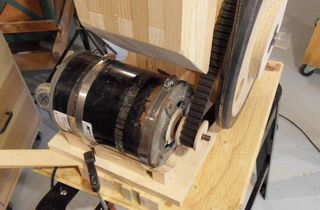 Motorizing the bandsaw
Motorizing the bandsaw